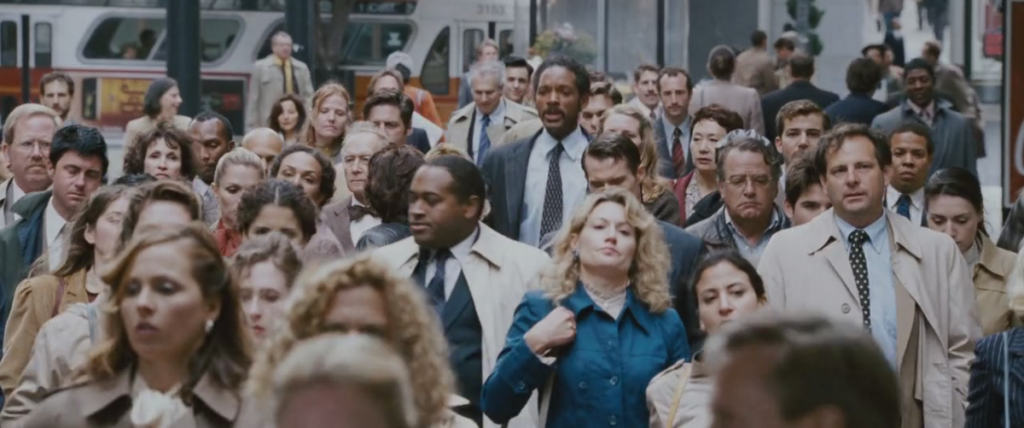Cinematography is all about the camera and the visualization of what the audience is seeing. The director is always making choices of what to put on the screen, what is the frame used, what is the lighting, angle, lenses, etc of a particular scene. It’s the combination of all the intentional choices that makes the scene convey its meaning. All these elements impact the viewer subconsciously, making the moment presented on screen so memorable and classic.
The Pursuit of Happiness, for example, has used different choices of focal Lenses in one of its final scenes. It was long lenses and movement, where Will Smith is walking among the crowd starting closer to his face. And the shot started with a medium shot, having a focus on his facial expressions. It was then held enough to move away, more to a long shot making more crowd on the street in the frame. Will Smith’s very emotional facial expression makes a strong contrast to all other people who kind of have “poker faces”. Because of this cinematography in addition to the plot, this scene particularly stands out to me.

The use of camera distance can also be used to create similar senses for the audience. Featuring The Good, The Bad, And The Ugly. I cannot even remember the plot anymore but the scene remains clear to me when the two characters were facing off. The Camera starts from an extreme long shot to show us the setting. Then as their conversation goes on, there’s several cuts, gradually getting closer to medium shot, and finally extreme close up to the character’s faces. Because this choices of cinematography build up tension in that particular scene, I was able to remember it so well.

Finally, you can’t say it’s all about Cinematography that takes the credit of making a scene particularly “stand out” or memorable, because cinematography has many intersections with mise-en-scene. For example, tonal contrast includes multiple elements like lighting, filter, and post-production work. It is really interesting for me that while color is very important, it is not necessary when trying to create some kind of contrast wanted. I really get the sense that even though technology is advancing and we have such better cameras and settings nowadays, that really doesn’t mean the cinematography is better. Films in the past are able to use just black, white, and different shades of gray to present the sharp contrast which still makes them classics. We just have more options now, which also means it is harder to decide what to use. Continue on lighting, there’s the purposeful choice of over and underexposure which is always used to highlight certain people or object. To sum up, I think whatever specific techniques of cinematography is used, they always create similar purpose to makes scenes particularly memorable as I point out in those two examples.